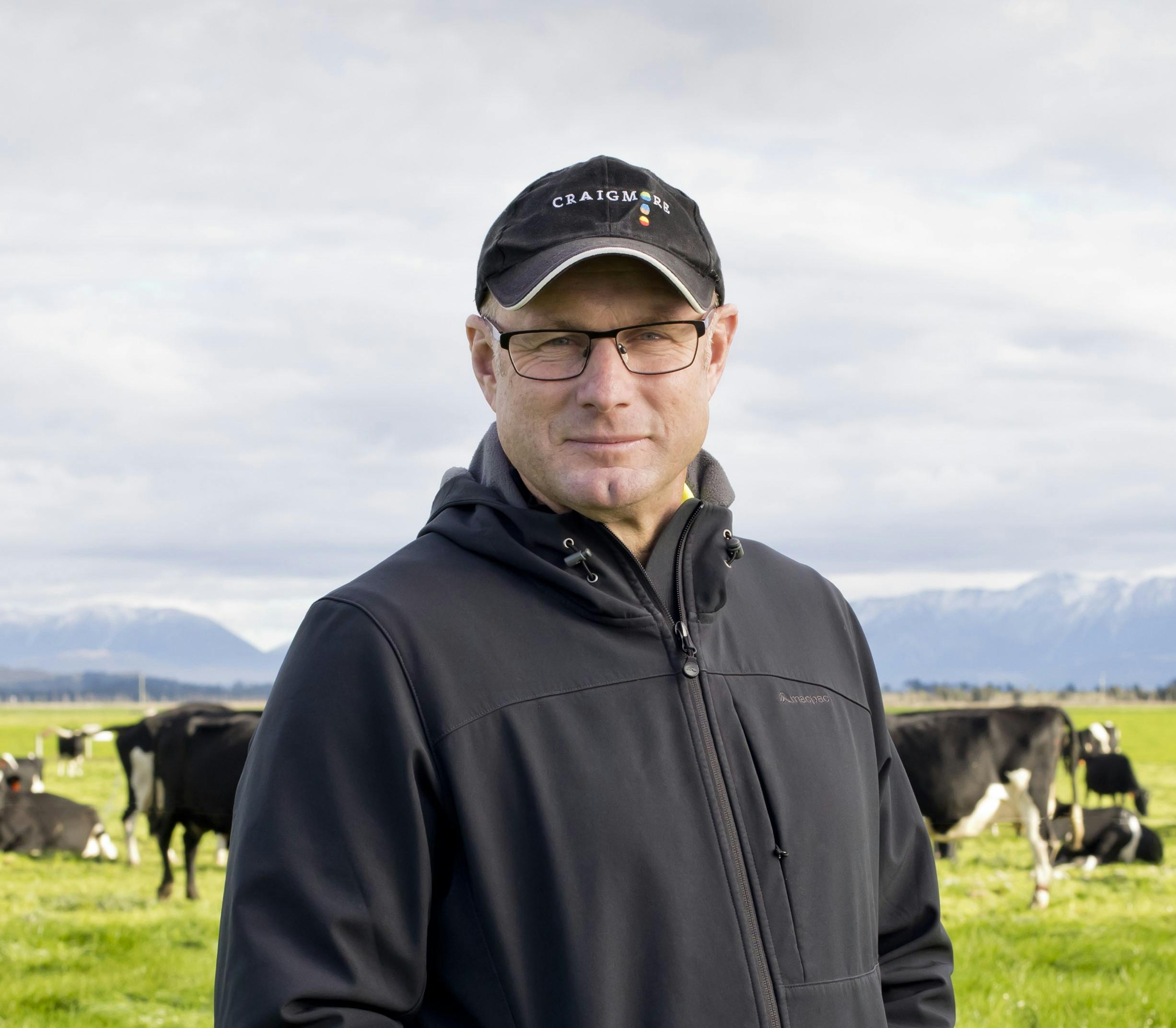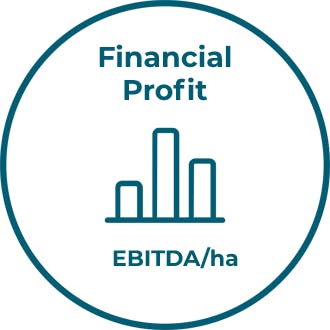Industry
Top 5 KPIs: Stu Taylor

“At the core, good farming is farming well, in all parts of your farm business. Lean on your wider farm network, whether that’s your farm consultant, vet, DairyNZ, or local farmer group. There’s a wealth of knowledge out there, and the best results come from collaboration and shared learning.
Above all, don’t fear change. Farming has always been about adapting. The industry is constantly evolving, and those who embrace innovation while staying true to sound farm management will be the ones who thrive.”
- Stuart Taylor, GM Farming, Craigmore Sustainables
Stuart Taylor is the General Manager of Farming at Craigmore Sustainables. A fifth-generation dairy farmer, he believes the key to New Zealand farming is running successful businesses that support the economy and local communities while continually improving sustainability. Stu is also part of AgriZeroNZ’s Farmer Focus Group, providing his views and feedback regarding implementation of emissions mitigation tools for farming systems in New Zealand.
When it comes to adopting new innovations on-farm, Stu’s advice is simple: get the basics right first. Then, keep an eye on the early adopters - talk to them, learn from their experiences, and once you’re confident in their approach, take the step yourself. There’s no harm in being a fast follower - it’s about making informed, practical decisions that work for your farm.

Leadership & Farm Management
Strong leadership and management are key to achieving success across all KPIs. High pasture consumption, healthy cows, and well-maintained assets don’t happen by accident - they’re the result of clear direction and effective management. A well-led team performs better, stays motivated, and ultimately drives farm success.
At Craigmore, we strive to be a transformational employer by providing career pathways and developing future rural leaders. Our commitment to professional and personal growth is embedded in our farm management approach.
We use Rural Coach’s People360 framework to gather feedback from farm managers, operations staff, and equity partners. This helps us measure leadership effectiveness across key areas, including HR, health and safety, and farm performance. The process runs annually, with performance rated at three levels: Developing, Achieved, and Gold Standard.
We aim for most of our team to reach “Achieved” or “Gold Standard” while supporting those in “Developing” as they grow their leadership skills. Leadership training is embedded in our farm plans, ensuring a balance between operational goals and personal development.
Beyond our internal programmes, we encourage our leaders to engage in peer groups outside Craigmore to challenge their thinking and refine their leadership approach. Strong leadership isn’t just about farm performance - it’s about fostering a positive workplace where teams thrive.

Greenhouse Gas Efficiency - Intensity Measure
At Craigmore, we track CO₂ equivalent per KGMS as a key measure of efficiency. Reducing greenhouse gas (GHG) intensity is critical for the future of NZ farming, and we’ve made sustainability a priority. Three years ago, we introduced sustainability-linked loans that align financial incentives with our environmental goals.
Reducing emissions isn’t as complex as it seems, it starts with running an efficient farm system. Our approach has two key elements:
- GHG Efficiency: A 1% reduction in emissions across all farms annually.
- Innovation Layer: Creating space to trial new technologies while excelling in farm presentation, animal welfare, leadership, and profitability.
By empowering teams and equity partners who align with our values, we ensure continuous progress in emissions reduction and environmental sustainability.
Key innovations trialed:
- Boluses (methane reduction)
- Halter (virtual fencing & pasture management)
- Kowbucha (methane-reducing probiotics)
- EcoPond (reducing methane from effluent ponds)
- Flow automated backing gates (efficiency & welfare)
- Herd-i (animal health monitoring)
- Composting barns
- Dung beetles & biodiversity plantings
- Bioreactors (sawdust-based nutrient stripping wetlands)
We’re on track for net zero assets by 2035, targeting a 35% reduction in CO₂ intensity - achieved through incremental 1-2% changes in the farm system, and breakthrough innovations like Kowbucha and Ecopond. Further advancements, supported by initiatives like AgriZeroNZ, will help push beyond this target.
For a deep dive into some of our trials, check out these articles: https://www.craigmore.com/trial-of-new-technology-remains-a-focus-in-farming/ and https://www.craigmore.com/world-leading-methane-mitigation-technology-for-pastoral-farming/

Financial Profit
With 21 milking platforms and a dedicated dairy support grazing farm in the South Island, our operations produce over 79 million litres of milk annually.
EBITDA (Earnings Before Interest, Tax, Depreciation, and Amortisation) is a key measure of Craigmore’s financial performance, providing valuable insight into the efficiency and profitability of our farms. It’s also an excellent marker of a truly resilient farm system, which for me is one built on:
- A high-performing team and herd
- Well-maintained farm assets
- Strong connections with the local community, industry, and customers
- A deep understanding of the farm’s environmental impact
- Consistent profitability into the future
Of course, every farm is different, whether in terms of location or system type, meaning a good result for one farm may not be the same for another. External factors, such as the market, milk payout, seasonal changes, and environmental conditions, will always play a role.
To stay steady or grow, we need farms that can adapt. This is why having a resilient farm system is so important - it helps you navigate those challenges. It’s also essential to make the most of hedging tools like interest rate management and Fixed Milk Price (FMP) schemes. As we've grown, geographic diversification across our farms, including irrigation-based operations, has also been key to managing risk and ensuring long-term stability. A truly resilient farm system doesn’t just survive change - it thrives in it.

Pasture Consumed per Hectare
Balancing feed supply with demand is fundamental to pasture-based dairy farming and, when managed well, can be one of the most profitable aspects of your operation.
This is an agnostic measure which cuts through the noise of the different farm systems. Regardless of your farm system type, pasture growth is a key indicator of long-term success.
Achieving strong pasture performance relies on a combination of factors, including soil health, the selection of pasture cultivars, effective irrigation management, and well-maintained farm infrastructure. Equally important is maintaining a high-performing herd which means healthy cows are well-managed and productive.
Obviously, pasture growth varies depending on location. Our farming operation at Craigmore is spread across Canterbury and Otago, so we typically range from 16 -19 tonnes per hectare. With that said, the goal for us is to grow as much quality pasture as possible, fine-tuning farm management to ensure our cows can efficiently graze and utilise it.

6 Week In-Calf Rate ( > 75%)
This KPI reflects how well cows are monitored, managed, and cared for, with key factors including body condition score (BCS) before mating, team performance, and overall herd health and welfare. A strong in-calf rate is crucial for both animal welfare and farm productivity, serving as a clear indicator of herd performance and the effectiveness of farm management.
If our 6-week in-calf rate isn’t where it needs to be, we’re bound to see inefficiencies in the system, whether through late calving or empty cows. Getting this right helps align the herd with the pasture curve, providing greater flexibility and better options when it comes to replacements and early-calving cows. Across all farms, we target a 6 week in-calf rate of 75% or higher.
Interested to see what others have ranked as their Top 5 KPIs?
Take a look at what other industry characters have defined as their Top 5 Farming Key Performance Indicators.
More articles
Industry
Top 5 KPIs: Craig Hickman
Craig Hickman is a proud Fonterra farmer and the owner of a 1000-cow farm in mid-Canterbury. Craig shares the ways he strives for efficiency on farm
Industry
Top 5 KPIs: Colin Glass
Colin owns and operates a 650-cow dairy farm, and two further irrigated properties that rear and finish bull beef at Methven in Mid-Canterbury with his wife Paula, and their two daughters. Colin is chief executive of Dairy Holdings Limited which has extensive operations throughout the South Island. Colin shares the Top 5 KPIs he follows closely at Dairy Holdings.
Industry
Top 5 KPIs: Simon Le Heron
Simon Le Heron is the CEO at Canterbury Grasslands Limited (Canterbury Hub). With a legal background, a strong technical understanding of farming, and his own farming investments, Simon puts a unique lens on the Key Performance Indicators (KPIs) he focuses on.